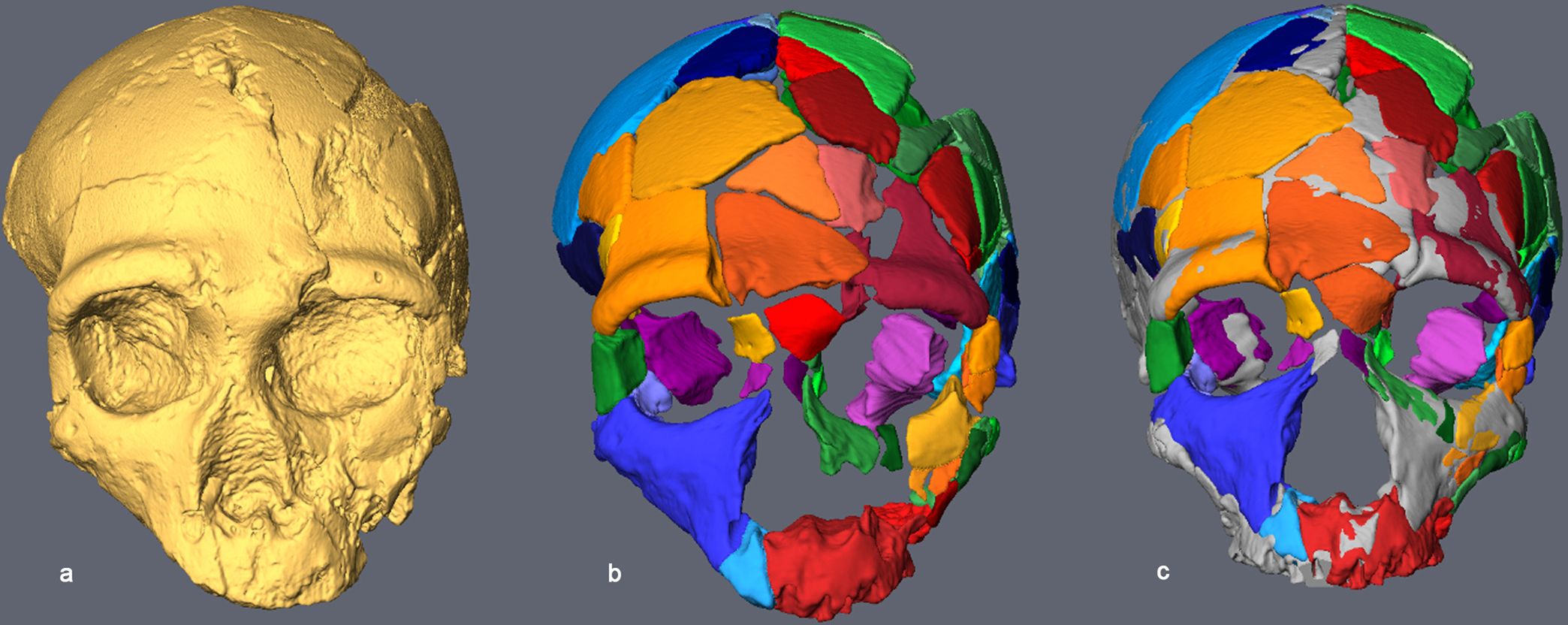Scientists say they uncovered an ancient human skull which could offer the earliest evidence of an early human presence outside Africa. The skull, which they believe to be 210,000 years old, could move the clock of mankind’s arrival in Europe back by more than 150,000 years. A new study could change our understanding of early human migration from Africa to other continents.
Researchers say the ancient human skull provides more details about early human migration and how modern humans spread across Eurasia. The research also suggests that Homo sapiens made several migration attempts from Africa, but some were unsuccessful. Scientists have long considered Southeast Europe to be the main route modern humans used to move from Africa to Europe.
Researchers discovered two fossilized but badly preserved skulls in a cave in Greece in the 1970s. At the time, the two skulls were identified as Neanderthal. According to a new study published in the journal Nature, researchers used computer modeling and uranium dating to estimate the ages of the two skulls.
Scientists say one of the fossilized skulls, called Apidima 2, after the cave, did indeed belong to a Neanderthal specimen. They believe it dates to 170,000 years ago. However, scientists believe the skull called Apidima 1 pre-dated Apidima 2 by 40,000 years and belonged to Homo sapiens.
“It shows that the early dispersal of Homo sapiens out of Africa not only occurred earlier, before 200,000 years ago, but also reached further geographically, all the way to Europe,” palaeoanthropologist Katerina Harvati of Eberhard Karls University in Germany told AFP. “This is something that we did not suspect before, and which has implications for the population movements of these ancient groups.”
The ancient human skull that’s believed to have belonged to Homo sapiens lacked all the classic characteristics native to Neanderthal skulls. There was no distinctive bulge in the back of the head. Neanderthals seem to have had a skull feature which looks like hair tied in a bun. The oldest known African fossil that belonged to a group of the Homo species, a jawbone found in Ethiopia, is believed to date to 2.8 million years ago.
Homo sapiens are believed to have replaced their Neanderthal relatives across Europe between 45000 and 35,000 years ago. Scientists consider that takeover to be gradual after a long time of living together and interbreeding. The discovery of an ancient human skull in Greece suggests that Homo sapiens went to Europe through the southern European route more than once, according to Eric Delson, a professor of anthropology at City University of New York who was not involved in the Nature study.
“Rather than a single exit of hominins from Africa to populate Eurasia, there must have been several dispersals, some of which did not result in permanent occupations,” Delson said.
“I think recent advances in palaeoanthropology have shown that the field is still full of surprises,” Harvati said, adding that the development of dating methods and genetics studies could help researchers learn more about our ancestors and how they spread around the world.





